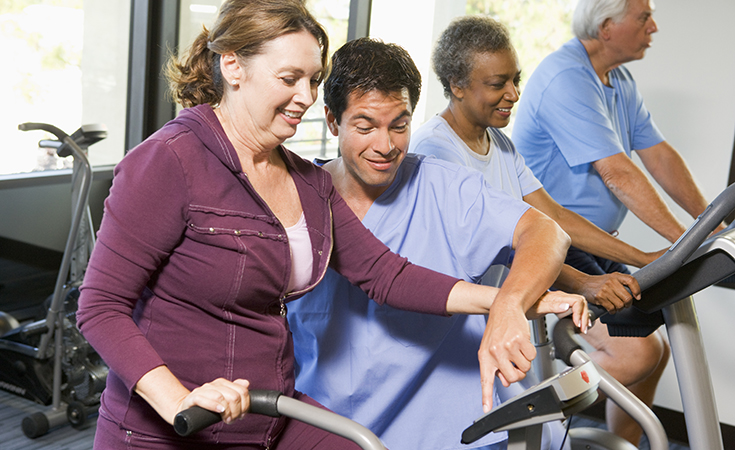
It’s hard to believe that our journey through the COVID-19 pandemic started eight months ago. Since then the way in which respiratory therapists meet their patients’ needs has looked a little different. How does a respiratory therapist treat a patient with pre-existing conditions when they are at a higher risk for contracting coronavirus?
One area of respiratory therapy that may be impacted more than others is pulmonary rehabilitation. During the pandemic RTs had to be more creative to ensure their patients stay healthy from a distance.
We reached out to AARC Member Debbie Koehl, RRT, RRT-NPS, AE-C, coordinator of the Pulmonary Rehabilitation Program at Indiana Health University Hospital, to discuss how the pandemic has affected pulmonary rehab.
Making it safe
For those patients who feel comfortable meeting in person for their therapy, Koehl’s program has worked hard to accommodate their needs and make the environment safe.
“I think [our facility] is safer than the average grocery store,” Koehl said.
Though, she does say many patients are hesitant to return to the program in person.
“I think the pandemic has impacted pulmonary rehab as patients are quite hesitant to return and some programs are hesitant to re-open,” Koehl said. “Re-opening was done with many new aspects, which included changes in group orientation and education, layout of the exercise and adding many PPE precautions.”
Rehab, but make it virtual
So, how does Koehl’s team serve patients who are unable to attend appointments in person? It is more difficult than you’d think.
“When we initially closed, we made weekly contact with all of our patients,” Koehl said. “What we found was that many did not have the equipment to exercise at home or the motivation to do so. The issue with doing virtual rehab is the how’s, the payment/reimbursement, and will patients have the technology to access a program. It takes money to start up a virtual program.”
Just a few of the questions that arise when creating a virtual program are:
- Does the patient have the technology capability for a virtual class?
- Does the patient have enough home oxygen?
- Does the patient have an oximeter at home? Hand weights or resistance bands?
- What form of exercise will the patient be doing?
- Walking is key, how will the patient accomplish this at home?
So, how does a pulmonary rehab program meet with their patients virtually while being realistic about hindrances?
“I think virtual programs will be a hybrid form of some kind,” Koehl said. “With initial and follow-up being in the program and 80-90% being done virtually. However, payment for services is a big concern as well as patient safety.”
Is virtual rehab on the horizon?
“Although I believe in person rehab is best, there is a group of people who cannot get to rehab for numerous reasons,” Koehl said. “A hybrid program which combines a few in-person sessions with the majority at home, led virtually is always better than none. The key is keeping the patient motivated!”
Virtual pulmonary rehab can be an idea worth pursuing in order to reach more patients nationwide.
“We could possibly reach many more patients who we would not have reached before,” Koehl said. “However, we need to make sure it is a program of value and makes a clinical difference in the lives of these patients. So, all of the key components of your hospital-based program needs to be in your virtual program as well.”
Email newsroom@aarc.org with questions or comments, we’d love to hear from you.














